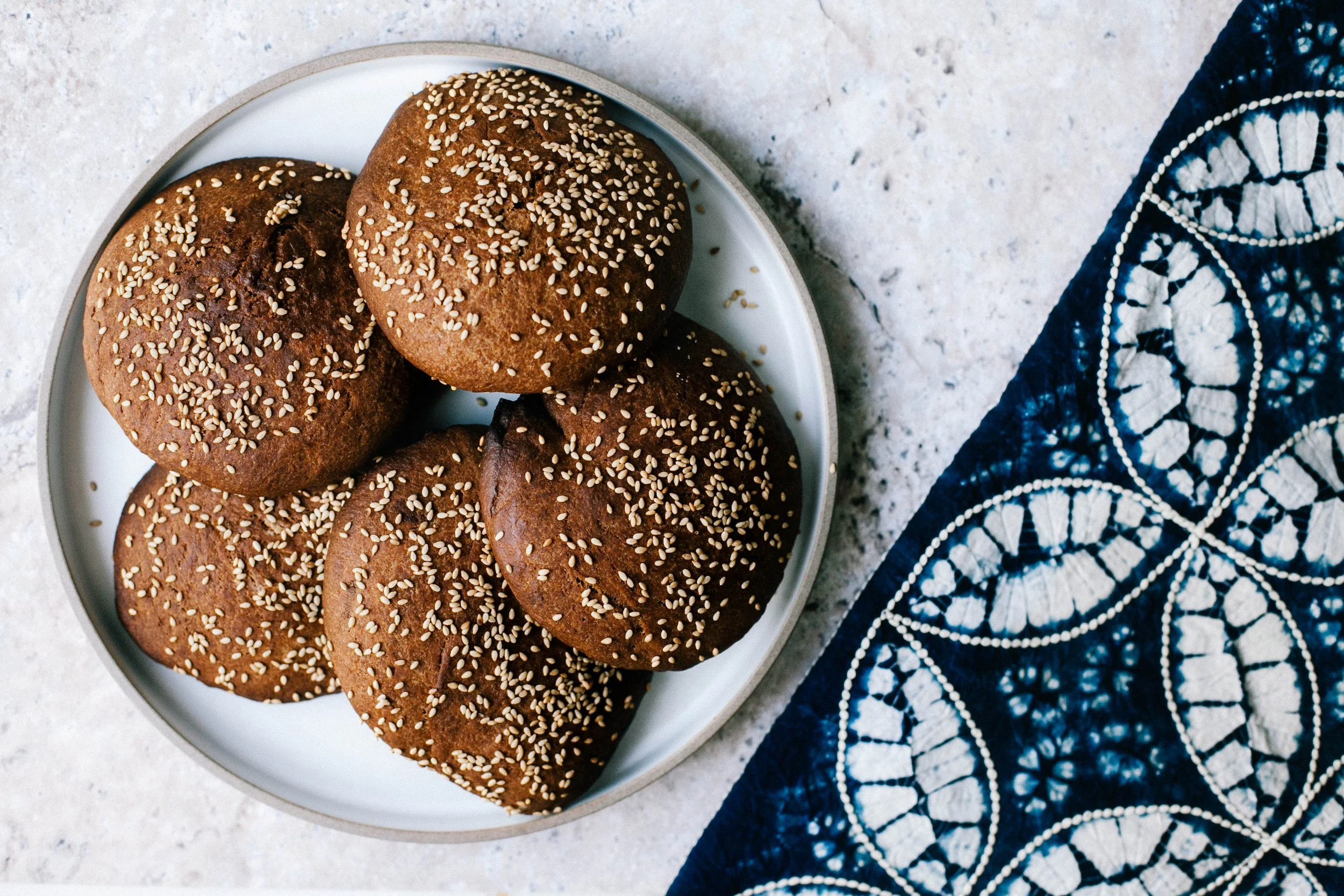
Fengzhen Mooncakes
丰镇月饼
English: Fengzhen Mooncakes
Chinese: 丰镇月饼
Pinyin: fengzhen yuebing
Literal: Fengzhen mooncake
When most people think of mooncakes, they imagine glossy, dense pastries filled with nuts or red bean (in the North) or lotus seed or salted duck egg yolks (in the South), stamped with auspicious characters and eaten during the Mid-Autumn Festival. But in the far North of China, especially on the grassland border between Shaanxi and Inner Mongolia, a very different type of mooncake exists: the Fengzhen Mooncake (丰镇月饼).
These are saucer-sized mooncakes the colour of brown sugar. Something between a biscuit and a cake, with a crumbly texture and no stuffing at all. Fengzhen mooncakes are a celebration of the region’s two abundant crops - wheat and sesame seeds. The sesame oil is mixed through the flour so that every bite is rich with the toasty sesame oil, and then sprinkled with sesame seeds to finish.
The Fengzhen mooncake crops up in history around 200 years ago. During the Qing Dynasty, the government recruited citizens to reclaim the Northern wasteland in Inner Mongolia, close to the vital Weiningkou gate of the Great Wall. The village that was created was Longshengzhuang (or Longshenghezhen) and became the apparent birthplace of Fengzhen mooncake. It was the perfect high-calorie food that would also store well, perfect for Mongolians traveling through the desert as well as Silk Road merchants. In a modern twist, I often make these, freeze them and then defrost one right before I head out on a business trip across China.
Makes 7 to 8
Ingredients
500g all purpose flour/plain flour
75ml sesame oil
75g brown sugar
50g rock sugar
250ml warm water
2g baking soda
4g baking powder
½ teaspoon dried yeast
1-2 tablespoons of sesame seeds
Method
Heat the oil in a pan over a medium heat. Once it’s smoking, turn off the heat and let it cool.
In a large mixing bowl, add the flour, baking soda and baking powder and mix together and set aside.
In a separate saucepan add the brown sugar and rock sugar with the water. Heat over a low heat, bringing it to the boil. Leave the sugar to dissolve into the water, perhaps 5 minutes or so. The rock candy will take a while until it’s completely dissolved so check, and then turn off the heat.
Once the oil is cool, pour into the flour and rub through the flour with your fingertips as if you were making a crumble. Rubbing the oil in this way ensures a softer texture to the final mooncake.
Pour in the sugar water and mix until no dry flour remains. It might be a bit hot so use a spatula first until it’s warm enough to touch. Add a touch more water if your dough is looking a bit dry, it depends on the flour. You want a fairly wet dough.
When the dough is still warm and moist, sprinkle over the yeast and then pour onto an oiled work surface and knead for five minutes until the yeast is worked into the dough.
Put the dough back into the mixing bowl, cover with plastic wrap or a damp cloth and leave until almost double the size (about 30-40 minutes).
Line a 2 or 3 baking trays with baking paper, and then preheat the oven to 200°C (185°C Fan-Assisted)
Pour the dough onto the surface again. Cut the dough into 7-8 pieces, weighing about 130-150g each. This will give you large saucer-sized mooncakes as is traditional in Inner Mongolia.
Shape the pieces into balls and cover with plastic wrap for 10-15 minutes.
Roll the pieces flat to about 10cm rounds and place onto the baking trays. Brush each mooncake with oil and then sprinkle the surface liberally with sesame seeds.
Bake for 30 minutes then remove from the oven.
It is traditional to brush with sesame oil as they cool, but I often omit this last step as it tends to brush off the sesame seeds.



